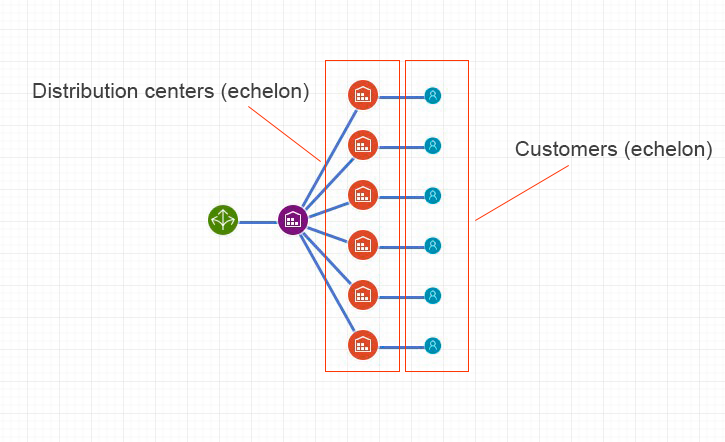Read more about inventory optimization and planning.
Volatile supply and demand make it necessary to keep certain inventory levels to satisfy customers. Therefore, increasing a supply chain inventory level will increase customer service and revenue, but it comes at cost.
While traditional inventory optimization would seem to be a solution to this problem, it lacks an end-to-end overview of the supply chain; it usually considers different supply chain nodes separately, and decisions made in one warehouse limit optimization opportunities for the entire network.
To reduce the inventory level and the costs associated with them across the entire supply chain, considering complex interdependencies between its nodes, supply chain managers use multi-echelon inventory optimization.
Read more about inventory optimization and planning.
Multi-echelon inventory optimization or MEIO aims to analyze different supply chain levels (also called echelons) not separately but within the entire network. It answers the question of what is more effective – to store inventory at the beginning of the supply chain, close to the raw material supplier, at the end, close to the end customer, or is it best to have the stock spread equally across the whole network.

Diagram explaining what echelons in supply chain are
An echelon is nodes of the same level. For example, there’s a distribution echelon which consists of all distribution centers or a supply echelon which represents all suppliers in a supply chain.
While multi-echelon inventory optimization focuses on inventory levels across the entire network, single-echelon inventory optimization helps determine the appropriate level of inventory for an individual echelon within the supply chain.
As a supply chain manager or analyst, you might be wondering why you should even care about multi-echelon supply chain optimization.
Leave rules of thumb and guesswork behind. MEIO uses powerful analytics to generate the right inventories to meet demand, address demand volatility, and achieve targeted service levels.
Cost efficiency and better ROI. MEIO helps companies make better use of their capital, investing in optimal stock levels that move faster through the supply chain. It results in higher profit and return on investment.
Better service level. Without MEIO, companies may end up with too high or too low inventory level resulting in insufficient demand fulfillment and excessive costs.
Management of demand and supply fluctuations. With MEIO companies can quickly respond to sudden changes in market demand or supply.
When performing multi-echelon inventory optimization, formulas could fail to deliver accurate and real-life results. So, instead of relying solely on Excel-spreadsheets to do calculations, supply chain managers supplement them with simulation.
Using just formulas, a manager could guess what the right safety stock or inventory policy is. But they couldn’t see nor prove whether a formula is suitable for their network before a policy is implemented in the real world.
Simulation in anyLogistix software, on the contrary, captures supply chain operations over time, helping analysts study gradual step-by-step changes in a system and examine inventory levels at any given moment. It can dynamically represent the operations within echelons and account for:
As a supply chain management professional, you need to understand the difference between single-echelon and multi-echelon inventory optimization and how each approach helps reduce supply chain costs while balancing service and inventory levels. And in the era of digitalization, the most effective technique to perform multi-echelon inventory optimization is running simulations as they account for volatile demand fluctuations and help take a holistic view of the end-to-end supply chain.
To learn how companies use simulation in end-to-end inventory optimization, take a look at our white paper Simulation-Based Inventory Planning for the Digital Supply Chain Era.